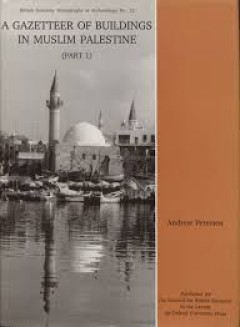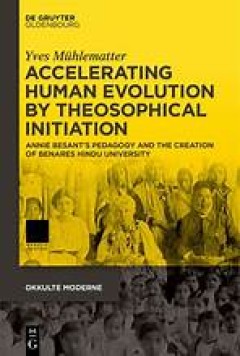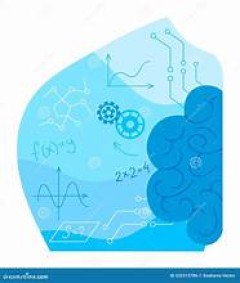Filter by

Across the Oceans: Development of the overseas business information transmission
"In the early 19th century, the only way to transmit information was to send letters across the oceans by sailing ships or across land by horse and coach. Growing world trade created a need and technological development introduced options to improve general information transmission. Starting in the 1830s, a network of steamships, railways, canals and telegraphs was gradually built to connect di…
- Edition
- -
- ISBN/ISSN
- 9789522228093
- Collation
- oer.unej.ac.id
- Series Title
- -
- Call Number
- -

Across Space and Time. Papers from the 41st Conference on Computer Applicatio…
This volume presents a selection of the best papers presented at the forty-first annual Conference on Computer Applications and Quantitative Methods in Archaeology. The theme for the conference was "Across Space and Time", and the papers explore a multitude of topics related to that concept, including databases, the semantic Web, geographical information systems, data collection and management,…
- Edition
- -
- ISBN/ISSN
- 9789089647153
- Collation
- oer.unej.ac.id
- Series Title
- -
- Call Number
- -

A Gazetteer of Buildings in Muslim Palestine: Part 1
The aim of the survey on which this book is based was to make a record of all buildings constructed in Palestine during the medieval and Ottoman periods. The survey area covers the modern state of Israel excluding West Jerusalem and Ramla (which are covered in separate publications). The West Bank and Gaza will be the subject of Volume II. Library of Congress subject headings for this publicati…
- Edition
- -
- ISBN/ISSN
- 9781739730208
- Collation
- 340 hlm
- Series Title
- -
- Call Number
- -

Accelerating Human Evolution by Theosophical Initiation
Religious studies; esotericism; theosophy; postcolonialism; thema EDItEUR::G Reference, Information and Interdisciplinary subjects::GT Interdisciplinary studies::GTZ General studies and General knowledge; thema EDItEUR::N History and Archaeology; thema EDItEUR::3 Time period qualifiers::3M c 1500 onwards to present day; thema EDItEUR::3 Time period qualifiers::3M c 1500 onwards to present day::…
- Edition
- -
- ISBN/ISSN
- 9783110794793
- Collation
- oer.unej.ac.id
- Series Title
- Okkulte Moderne,
- Call Number
- General studies

3D Recording and Interpretation for Maritime Archaeology
This open access peer-reviewed volume was inspired by the UNESCO UNITWIN Network for Underwater Archaeology International Workshop held at Flinders University, Adelaide, Australia in November 2016. Content is based on, but not limited to, the work presented at the workshop which was dedicated to 3D recording and interpretation for maritime archaeology. The volume consists of contributions from …
- Edition
- -
- ISBN/ISSN
- -
- Collation
- -
- Series Title
- -
- Call Number
- -

Abstractions Based on Circles
Presented to Stan Beckensall on his 90th birthday, this diverse and stimulating collection of papers celebrates his crucial contribution to rock art studies, and also looks to the future. It should be of value to students of prehistoric Britain and Ireland, and anyone with an interest in rock art, for many decades to come.Stan has done a phenomenal amount of work over recent decades, on an enti…
- Edition
- -
- ISBN/ISSN
- 9781803273174
- Collation
- oer.unej.ac.id
- Series Title
- -
- Call Number
- -

4000 Years of Migration and Cultural Exchange: The Archaeology of the Batanes…
The project reported on in this monograph has been concerned with the archaeology of the Batanes Islands, an archipelago that must have been settled quite early in the process of Austronesian dispersal from Taiwan southwards into the Philippines. A multi-phase archaeological sequence covering the past 4000 years for the islands of Itbayat, Batan, Sabtang and Siayan is presented, extending from …
- Edition
- -
- ISBN/ISSN
- -
- Collation
- -
- Series Title
- -
- Call Number
- -

A Corpus of Roman Pottery from Lincoln (Volume 6)
This is the first major analysis of the Roman pottery from excavations in Lincoln (comprising more than 150,000 sherds). The pottery is presented in seven major ware groups. Fine wares include a modest range of imports and are dominated by Nene Valley products. Oxidised wares are mostly local products with a few imports as are the shell- and calcite-tempered wares and reduced wares. The final t…
- Edition
- -
- ISBN/ISSN
- 9781789256567
- Collation
- -
- Series Title
- -
- Call Number
- -

A Corpus of Anglo-Saxon and Medieval Pottery from Lincoln
This volume reports on the Anglo-Saxon and Medieval pottery found during various archaeological excavations in the city from 1970 until 1987. The authors present a city-wide pottery classification system and analyse the sequence of pottery types through time and at numerous sites. They make extensive use of petrological analysis, including the study of over 600 thin-sections. These have been us…
- Edition
- -
- ISBN/ISSN
- 9781842170830
- Collation
- -
- Series Title
- -
- Call Number
- -

1982 Uncovered: The Falklands War Mapping Project
War and its legacy are traumatic to individuals, communities, and landscapes. The impacts last long beyond the events themselves and shape lives and generations. Archaeology has a part to play in the recording of, and recovery from, such trauma. The Falklands War Mapping Project delivers the first intensive archaeological survey of the battlefields of the Falklands War. The project is pioneerin…
- Edition
- -
- ISBN/ISSN
- 9781803273822
- Collation
- -
- Series Title
- -
- Call Number
- -
 Computer Science, Information & General Works
Computer Science, Information & General Works  Philosophy & Psychology
Philosophy & Psychology  Religion
Religion  Social Sciences
Social Sciences  Language
Language  Pure Science
Pure Science  Applied Sciences
Applied Sciences  Art & Recreation
Art & Recreation  Literature
Literature  History & Geography
History & Geography